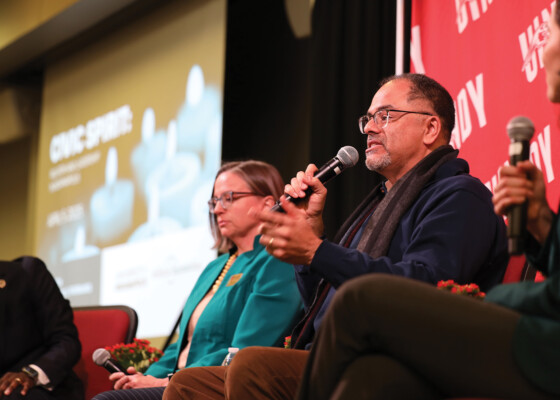Marie Stuart Edwards
August 12, 2021This blog is an excerpt on the comprehensive history of Marie Stuart Edwards. Read the rest of her story here and view a comprehensive gallery of photos on the Miami…
This blog is an excerpt on the comprehensive history of Marie Stuart Edwards. Read the rest of her story here and view a comprehensive gallery of photos on the Miami County Indiana Worth Remembering website.
“Indiana may well be and is justly proud of one who is possessed of so many striking capabilities, such inexhaustible energy and such unselfish readiness to give of herself for the betterment of all as Marie Stuart Edwards of Peru, whom to know is to love.”
– Journal and Courier, 27 April 1921, Lafayette, IN, quoting the Elkhart “Woman Voter’s”
When we first began studying the suffrage movement in Miami County, it quickly became clear Marie Stuart Edwards was important. We just didn’t realize how important a role she played. Not just in Miami County but at both the state and national levels as well.
Who was Marie? What exactly did she do that deserves such high praise from the Journal and Courier?
Marie Stuart was a closer when it comes to the Women’s Suffrage. She and the women of Miami County played a big part in getting the 19th Amendment to the finish line. We are working on bridging the period gap between the time Lizzie Bunnell published the last issue of The Mayflower in Peru in 1863 and the creation of the Peru Franchise League in 1914, time when Marie Stuart arrived on our local scene.
Marie Stuart was born in Lafayette, IN on September 11th, 1880, the daughter of Ada Ellsworth and Thomas Arthur Stuart. We don’t know much about her youth, except that she is said to have been the first girl in Lafayette to ride a bike and to go to college.
Marie was born in the upper-middle-class family of prominent lawyer, Thomas Arthur Stuart, who had followed in his own father’s footsteps, Indiana Supreme Court Judge William Z Stuart. Marie’s mother, Ada, was not without a prominent background herself. She was born in Indianapolis and had grown up at the site of what is now the War Memorial. Her father Henry Ellsworth served as Minister to Sweden under James Buchanan. Her great-grandfather, Oliver Ellsworth, was a delegate to the Constitutional Convention and later served as the 3rd Chief Justice of the US Supreme Court.
Enjoying the comforts money can afford one does not shelter from tragedy. It would not spare Marie any more than it had her mother Ada, who had lost both her parents by the time she was 14.
Marie was almost 12 years old when her father, Thomas died. Ada was left on her own to raise Marie and her little brother, Allison, 6. Thomas Arthur was only 39, and on his way to a promising career of his own. In 1890, he and his brothers, Charles B. and William V. founded the legal firm of the Stuart Brothers[1]. Both brothers would take a turn as President of the Purdue University Board of Trustees, as would Allison also.
After her husband’s death it seems Ada began taking care of her ailing siblings. It is also said it is about then that Marie became the first girl in Lafayette to ride a bicycle. You might also like to know that it is around 1890 that women’s bikes became a symbol of the suffrage movement as it enabled women to go further than they had before been able to go on their own.
It is easy to understand how Ada Ellsworth Stuart would want to foster a desire for self-reliance in her daughter. Ada had been an orphan and was now a widow, wealthy as she might have been, she still seemed to depend on the kindness of relatives to ensure her children had all she hoped they could have.
It is said that after Charles Stuart’s death in February 1899, Ada moved in with her sister-in-law Alice Earl Stuart, at “Earlhurst”, in Lafayette, Indiana. But the 1900 Census shows that she is ‘keeping house’ for Lewis Perry, a “woolens dealer” in Chicago. Allison Stuart is listed as a cousin to the head of household however, while Rhea and John Morrill are listed as “Wards”, and Annie F Ellsworth a boarder, Ada’s younger sister.
1901-1902 correspondence between Marie and her mother show that she took care of Annie and that her extended family did indeed help ensure she and her brother would not want for anything. By then Ada was no longer in Chicago.


